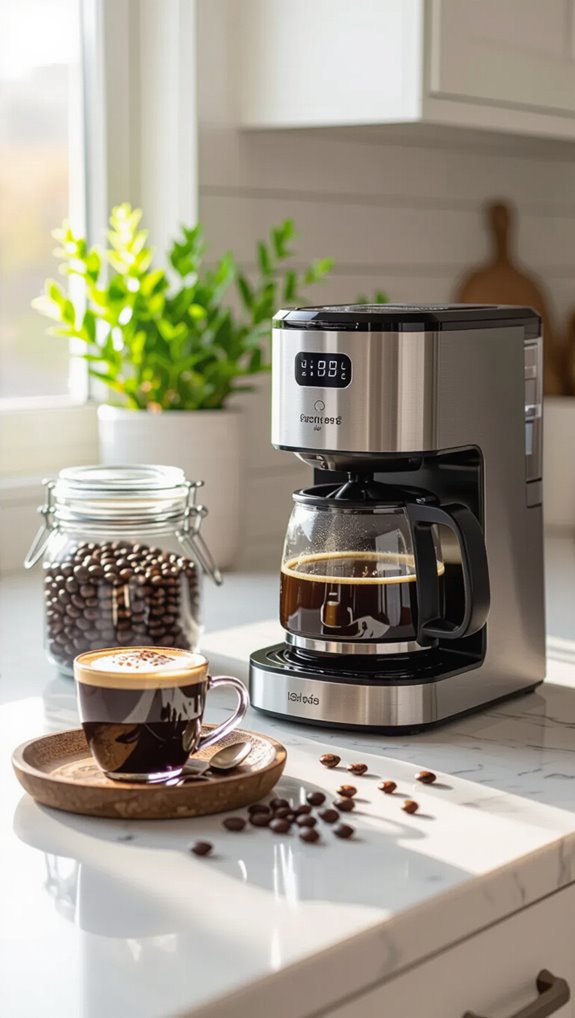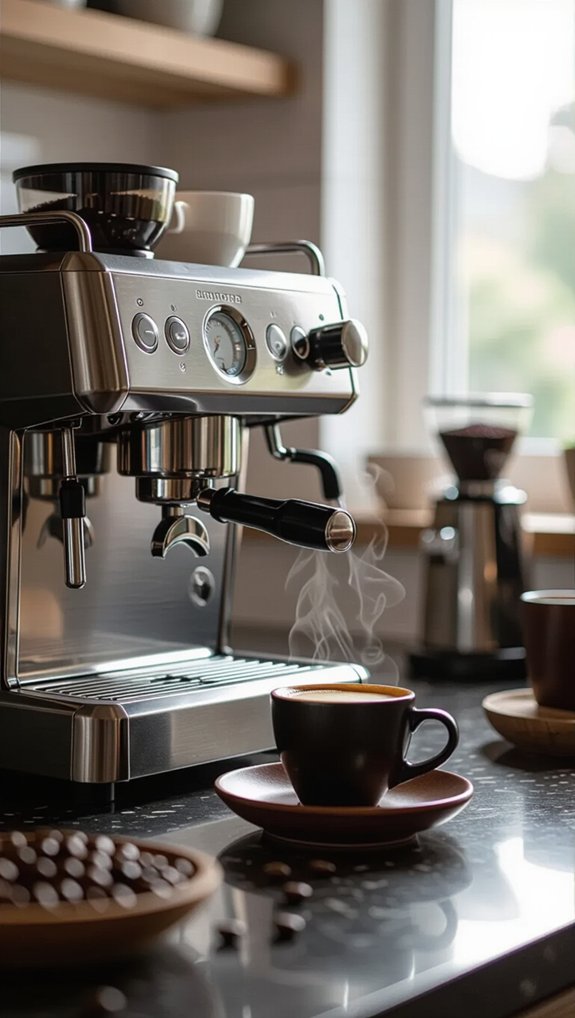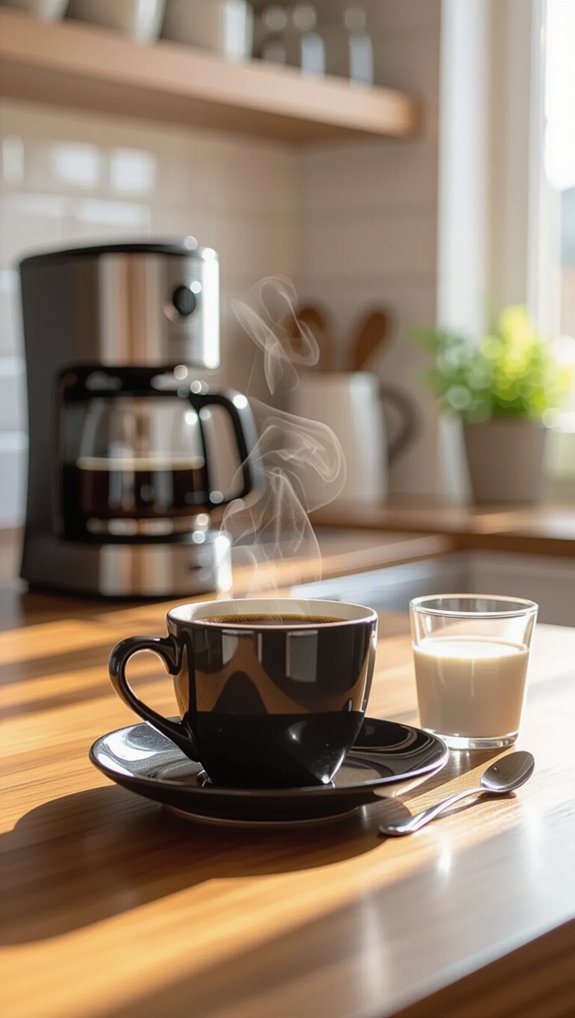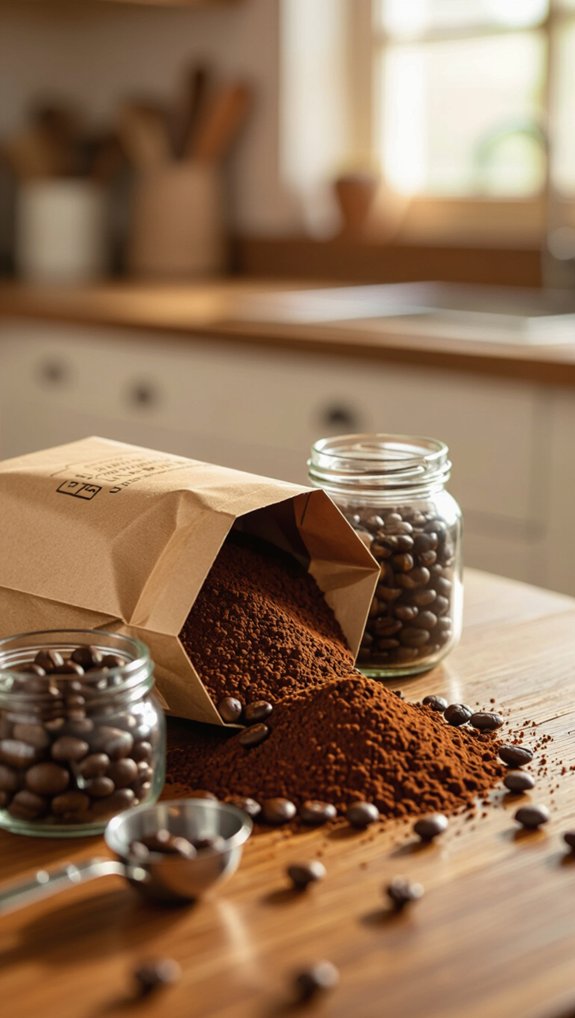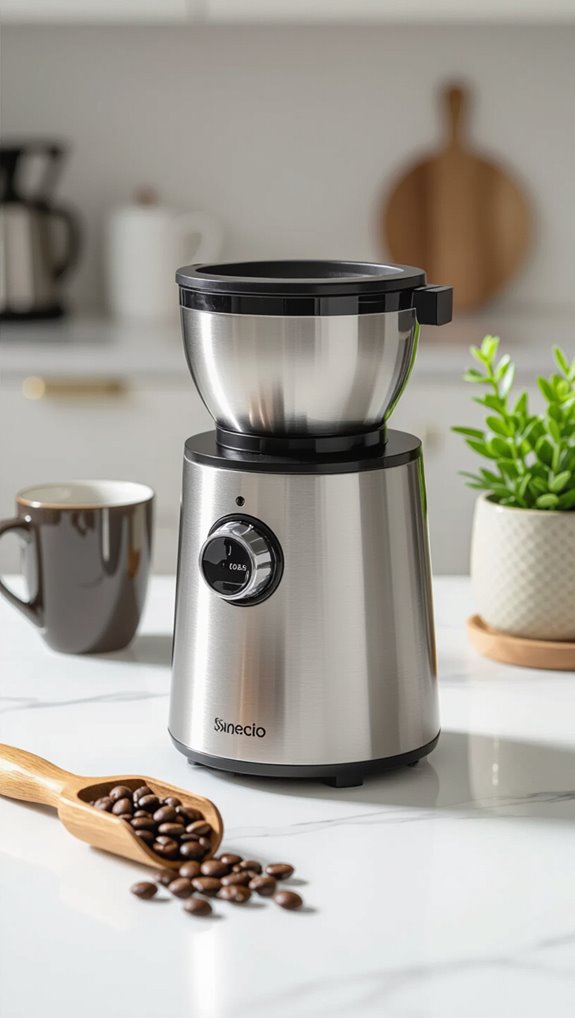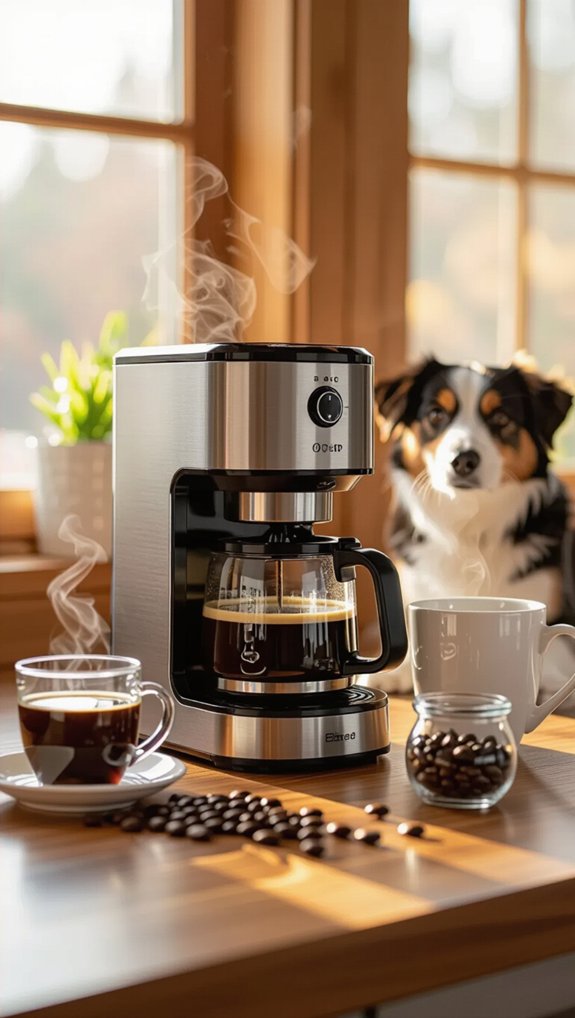Tired of the afternoon energy crash that comes with your regular coffee? Many coffee drinkers are searching for alternatives that provide sustained energy without the jitters or the inevitable caffeine comedown. Maca coffee has emerged as a popular solution, combining the rich, satisfying taste of coffee with the adaptogenic benefits of maca root.
This unique beverage offers a caffeine-free way to boost your energy naturally while delivering a surprisingly robust flavor profile. In this guide, we’ll explore everything you need to know about maca coffee – from its impressive health benefits and distinctive taste to its caffeine content and simple preparation methods. Whether you’re looking to reduce your caffeine intake or simply add a nutritious twist to your morning routine, you’ll discover how this ancient superfood can revolutionize your daily cup.
Table of Contents
What is maca coffee, benefits and risks

If you’re looking for a caffeine-free alternative that packs a nutritional punch, maca coffee might be your new go-to beverage.
This Peruvian Maca Root drink offers a unique energy boost without traditional coffee’s jitters. Made from gelatinized maca powder stirred into hot water or milk, it delivers an earthy, nutty flavor while functioning as a powerful adaptogen.
Potential benefits include steady energy, improved stamina, and relief from menopause symptoms.
However, maca side effects can include digestive upset or mood changes.
Start with small amounts (½–1 teaspoon) and choose high-quality, organic sources to minimize risks.
What does maca coffee taste like

A flavor chameleon of the beverage world, maca coffee delivers an unexpected taste profile that surprises first-time drinkers with its complex, earthy-sweet character.
The maca powder introduces a nutty, earthy foundation with delightful caramel-like undertones that dance across your palate. When crafting a maca latte, I’ve found that adding vanilla extract, cacao powder, or a splash of oat milk can beautifully amplify its natural sweetness.
The flavor remains remarkably smooth, avoiding the bitter notes typical in traditional coffee. Each sip offers a subtle creaminess and mellow rooty essence that transforms your morning brew into a nuanced, comforting experience.
Does maca coffee have any caffeine

The caffeine content in maca coffee depends entirely on its base ingredients, creating a nuanced beverage landscape that might surprise health-conscious coffee lovers.
Pure maca powder and maca root are naturally caffeine-free, offering an adaptogenic boost without stimulants.
When you add maca to coffee, the caffeine comes from the brewed coffee itself. Commercial maca blends vary wildly—some are caffeine-free, while others include roasted coffee beans. To know your exact caffeine intake, always check product labels.
If you’re seeking a low-caffeine or caffeine-free option, opt for pure maca powder or certified caffeine-free maca coffee alternatives.
How to make maca coffee at home
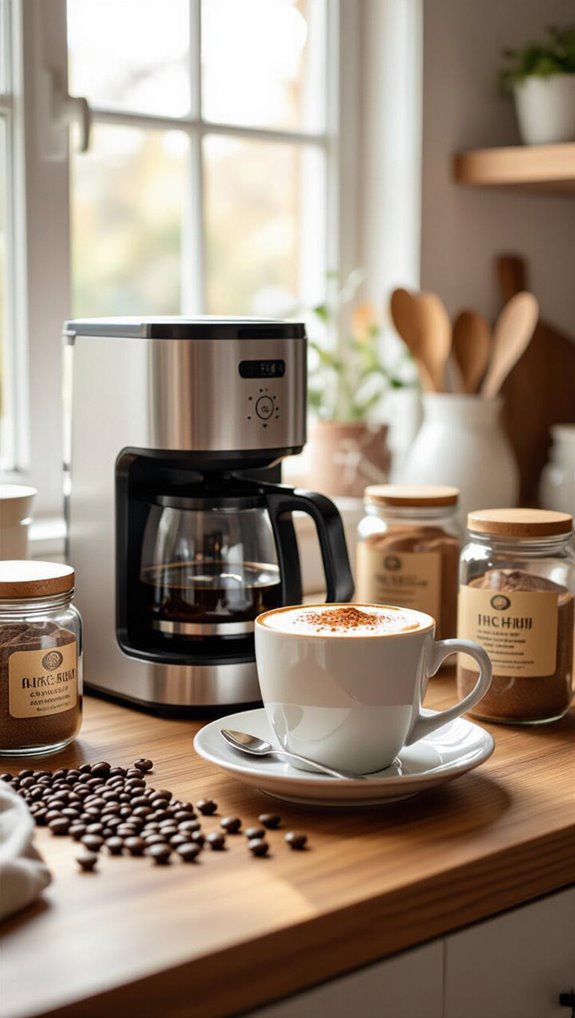
Making maca coffee at home is simple and requires just a few key ingredients and basic kitchen tools.
You’ll need maca powder, your choice of milk or water, a sweetener like honey or maple syrup, and tools such as a whisk, blender, or milk frother to create a smooth, creamy beverage.
I’ll walk you through the essential ingredients, equipment, and step-by-step instructions to craft a delicious maca coffee that’ll become your new morning ritual.
Ingredients
Whipping up delicious maca coffee at home is easier than you might think, requiring just a few simple ingredients and basic kitchen tools.
Whether you’re craving a classic maca coffee or want to experiment with a mocha twist, you’ll need a few key components:
- 1–2 teaspoons maca powder (gelatinized if you have sensitive digestion)
- Hot water or steamed milk (dairy or plant-based)
- Optional espresso shot, cacao powder, maple syrup, and vanilla extract
Pro tip: Start with a small amount of maca powder and gradually increase to find your perfect flavor balance.
Equipment
Gather your kitchen arsenal to transform maca powder into a delectable coffee experience with just a few essential tools. A handheld milk steamer or electric milk frother will become your best friend for creating the creamiest maca latte. For iced maca coffee, a blender works wonders in achieving a smooth texture.
| Tool | Purpose | Best For |
|---|---|---|
| Milk Frother | Dissolving Maca | Hot Drinks |
| Blender | Mixing | Cold Beverages |
| Small Saucepan | Heating | Slurry Preparation |
| Shaker | Blending | Cold Brew Mixes |
Pro tip: Create a slurry with gelatinized maca powder first to prevent clumping and ensure smooth integration.
Instructions
Brew your perfect maca coffee at home with these simple, foolproof steps that transform an ordinary cup into a nutritious, flavor-packed experience.
Whether you’re craving a hot maca drink or iced maca coffee, mastering preparation is key.
Key tips for making maca coffee:
- Start with a small amount (1/2 tsp) of gelatinized maca powder to monitor tolerance
- Dissolve maca in warm liquid first, creating a smooth paste before adding remaining ingredients
- Choose between hot maca latte or cold brew style, adjusting serving size and sweetness
Experiment and enjoy your delicious, nutrient-rich maca coffee creation!
Can I drink maca coffee daily

Many people can safely drink maca coffee daily, with most studies and product guidelines recommending a consistent intake of 1–3.5 g (about ½–2 teaspoons) of maca powder per day. Start low at ½ teaspoon and gradually increase to assess your tolerance, preferably using gelatinized maca for easier digestion.
Experts suggest maintaining daily consumption for 4–12 weeks to experience sustained energy levels and potential mood improvements. Be mindful of mild side effects like stomach upset or headaches. Consider cycling your maca coffee intake—perhaps taking a day off weekly or a short break after 2–4 months—and always choose high-quality, organic Peruvian maca.
Best gear for making maca coffee
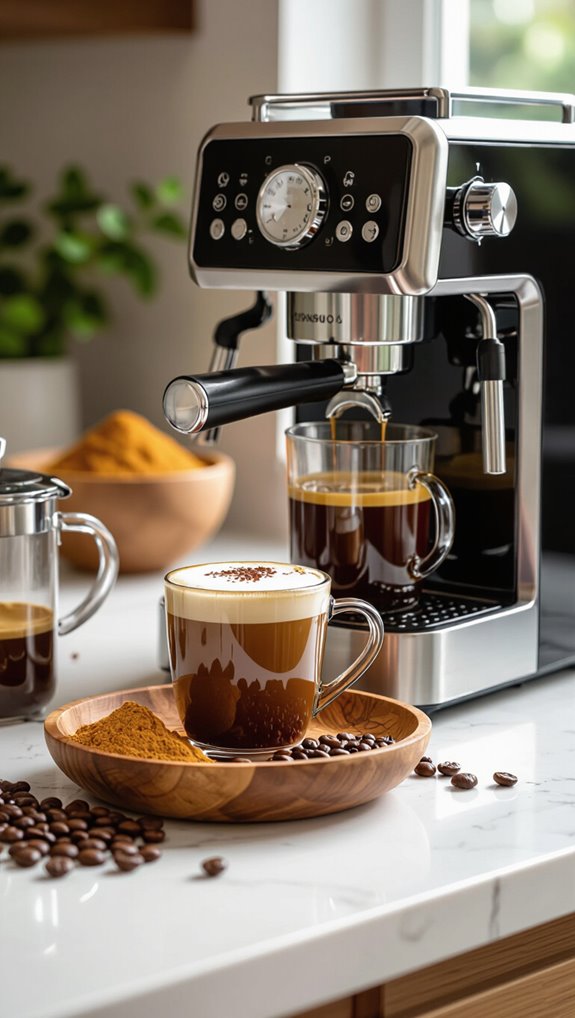
When you’re ready to level up your maca coffee game, you’ll want to invest in a few key pieces of gear that’ll transform your morning ritual from basic to barista-worthy.
Essential tools for crafting the perfect maca coffee include:
- An electric milk frother to create silky-smooth hot milk and seamlessly blend maca powder
- A personal blender for cold brew variations with ice and precise 2–4 grams of maca
- An airtight opaque jar to store your maca powder and preserve its energy-boosting nutrients
Your coffee toolkit ensures consistent flavor, texture, and potency every single morning.
Who should avoid maca coffee, side effects
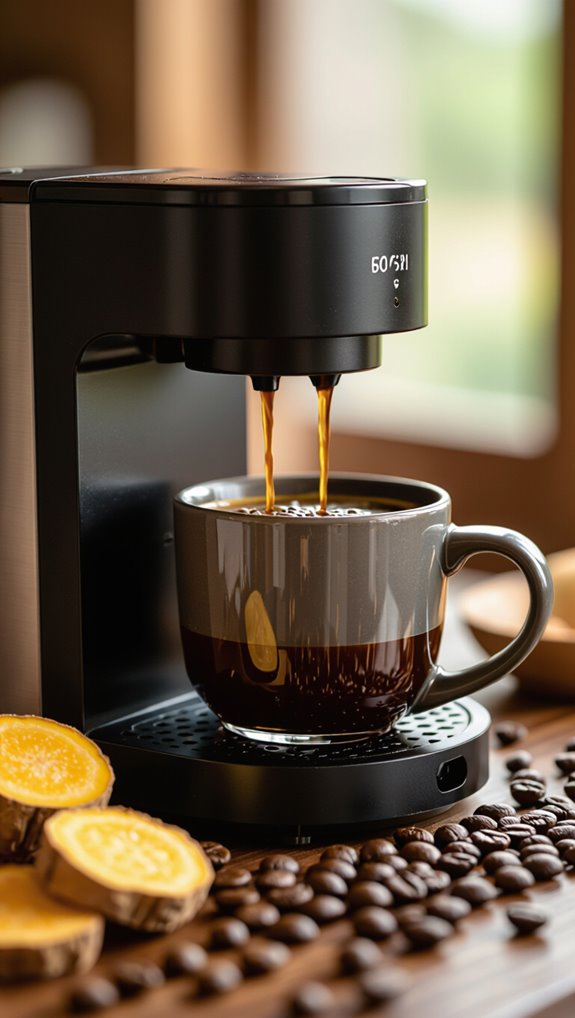
While your maca coffee gear might be ready to rock, not everyone can safely enjoy this energizing brew. If you have thyroid issues, are pregnant, breastfeeding, or battling hormone-sensitive cancers, pump the brakes before sipping. Maca can interfere with thyroid function and hormonal pathways, potentially causing complications.
Start with a low dose (½–1 tsp) if you’re new to maca coffee, and watch for side effects like digestive upset, headaches, or menstrual cycle changes. Always choose third-party tested organic products to minimize risks. When in doubt, consult your healthcare provider before adding this trendy supplement to your morning routine.
Where to buy good maca coffee
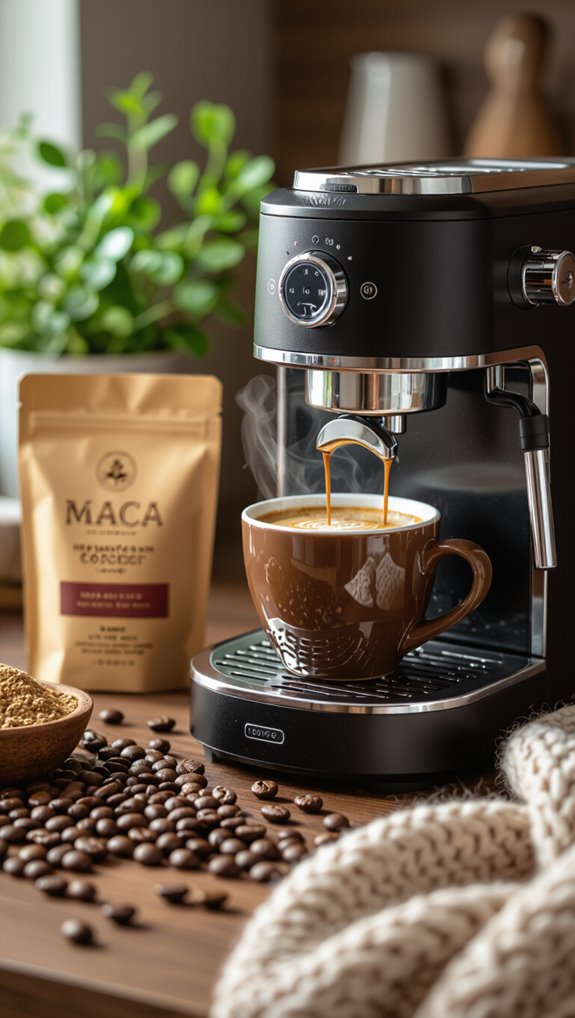
Because finding quality maca coffee can feel like navigating a maze, I’ll cut straight to the best sourcing strategies for home coffee enthusiasts and health-conscious caffeine lovers.
When buying maca coffee, prioritize trusted sources with transparent practices.
Key buying tips for maca coffee:
- Choose organic Peruvian maca powder with third-party testing from retailers like Mountain Rose Herbs or Gaia Herbs
- Select gelatinized maca for better digestibility, especially if you have sensitive digestion
- Check ready-to-drink maca coffee mixes for minimal additives and clear ingredient lists
Verify certifications and lab reports to ensure you’re getting a high-quality, safe product.
Maca coffee brands and honest reviews
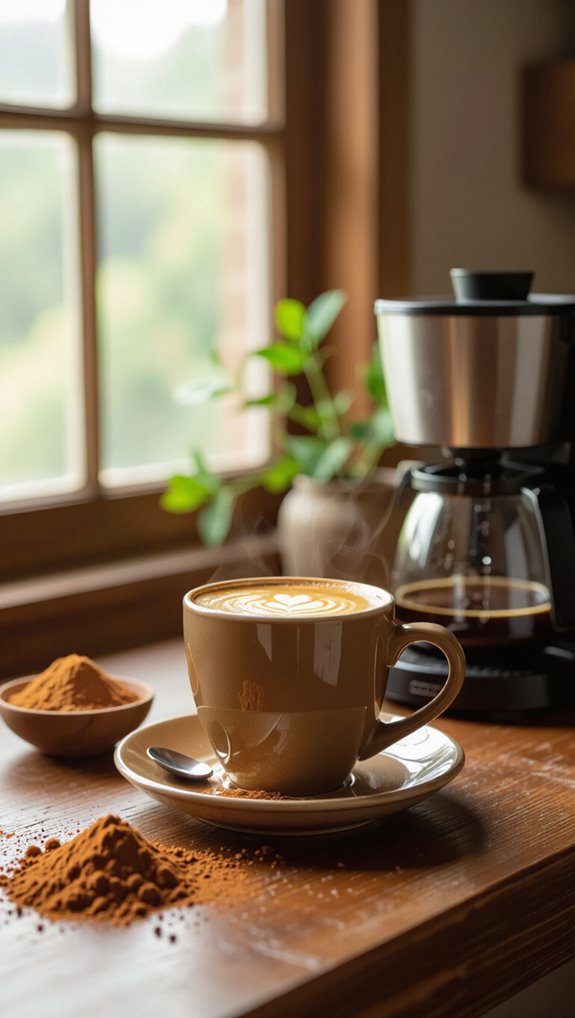
Let’s dive into the world of maca coffee brands that’ll transform your morning brew from mundane to magical.
Navitas offers a stellar roasted maca blend with cacao, while Gaia Herbs delivers gelatinized maca in convenient instant sticks.
Peruvian Naturals’ Maca Café brings authentic, cinnamon-infused Peruvian maca with rich caramel notes.
Third-party testing and organic certification vary, so check labels carefully.
When evaluating brands, consider taste profile, serving size (1–2 teaspoons recommended), and origin transparency.
Insider tip: Gelatinized maca improves digestibility, making these coffee alternatives not just delicious, but functional wellness drinks.
Simple maca latte recipe, coffee alternative

After exploring maca coffee brands, you’re probably wondering how to whip up a delicious maca latte at home. This coffee alternative with adaptogenic properties is super simple to make:
- Warm 1 cup non-dairy milk and whisk in 1/2 teaspoon maca powder
- Blend or use a milk frother for a creamy, clump-free texture
- Add an espresso shot for caffeine or enjoy as-is with maple syrup and cinnamon
I recommend starting low with gelatinized maca, which offers easier digestion. Insider tip: gradually increase to 1–2 teaspoons daily, and always consult a clinician if you have hormone sensitivities or are pregnant.
Frequently Asked Questions
How to Take Maca Coffee?
I start by stirring 1/2 to 1 teaspoon of maca powder into my hot coffee, whisking until smooth. I’ll gradually increase the amount as I get used to it, aiming for a daily 1-2 teaspoon dose.
Can You Taste Maca in Coffee?
Yes, you’ll definitely taste maca in coffee – it adds an earthy, nutty, slightly sweet flavor. Depending on how much you add (½–1 teaspoon), the taste can be subtle or more pronounced, especially in lighter coffee blends.
How to Mask the Taste of Maca?
I mask maca’s earthy taste by adding cacao, espresso, or nut butter, blending with creamy milk, and mixing in sweeteners like maple syrup. A dash of cinnamon or vanilla extract also helps minimize its strong, vegetal flavor.
How to Take Maca Correctly?
I start with 1/2 teaspoon of maca in my morning coffee, gradually increasing to 1 teaspoon daily. I blend it thoroughly to avoid clumping, and I’ll stick with this routine for 4-6 weeks to assess its effects.
In Conclusion
Maca coffee offers a unique blend of rich flavor and powerful health benefits that can truly transform your morning routine. This adaptogenic powerhouse delivers sustained energy without the jitters, making it an excellent alternative for those seeking natural stamina and mood enhancement. Whether you’re drawn to its earthy taste or impressive nutritional profile, maca coffee provides a delicious way to start your day with intention and wellness.
If you’re wondering how to make the perfect cup of maca coffee at home, the right brewing equipment can make all the difference in extracting those beneficial compounds while achieving optimal flavor. From traditional drip makers to advanced espresso machines, having quality gear ensures you get the most from your maca coffee experience.
To help you create café-quality maca coffee drinks in your own kitchen, consider checking out our comprehensive coffee machine reviews where we’ve tested and evaluated smart, well-reviewed options that excel at brewing specialty beverages like maca coffee to perfection.

